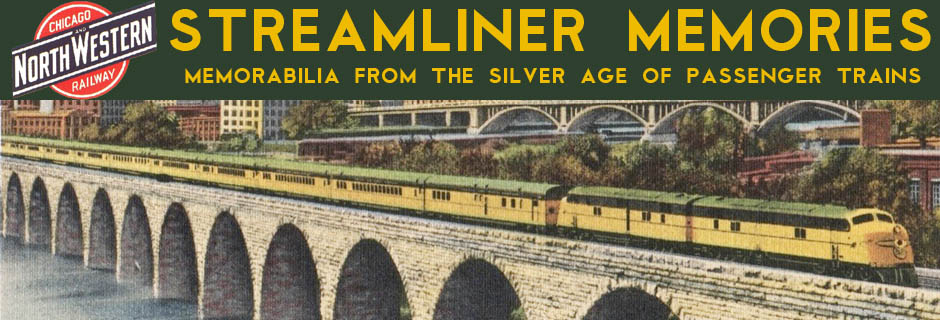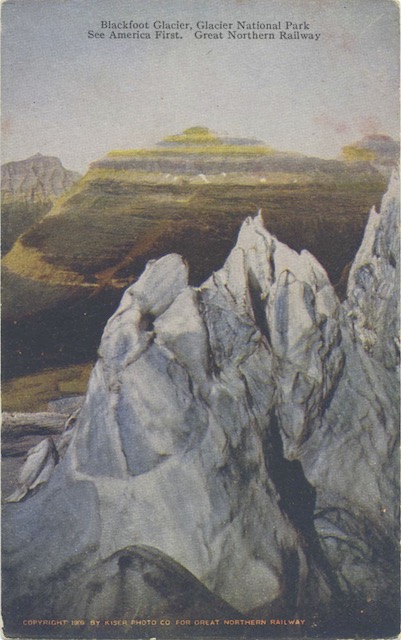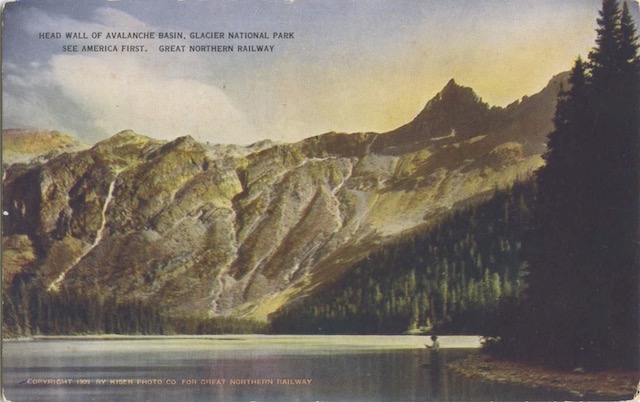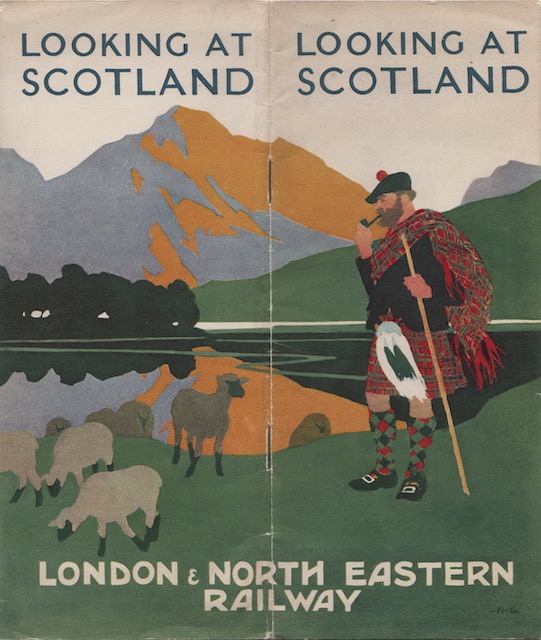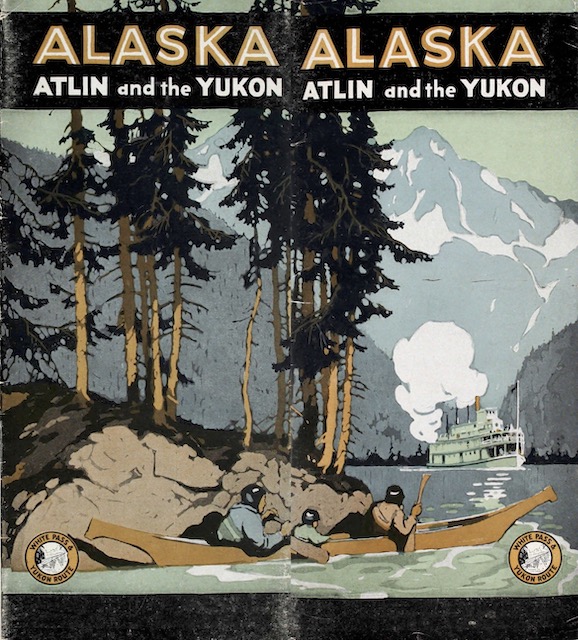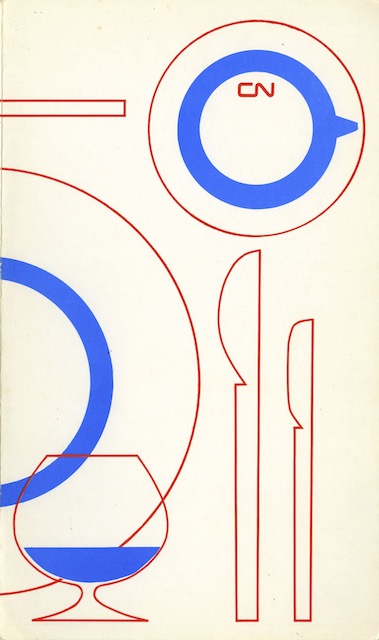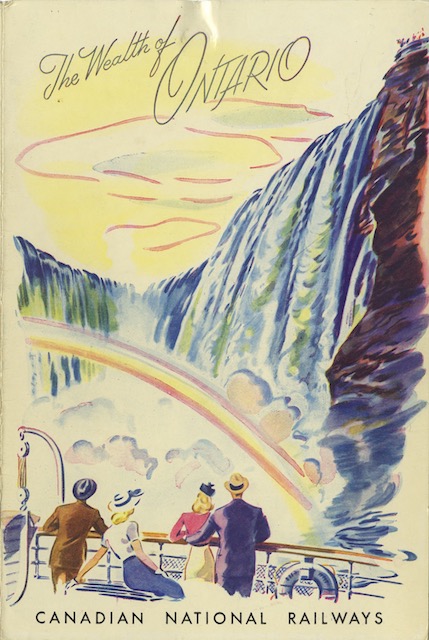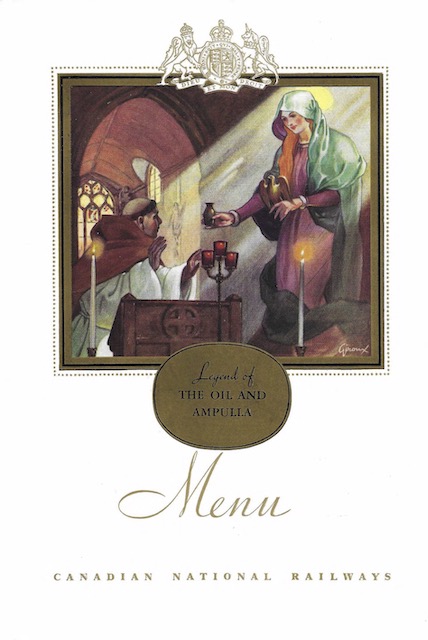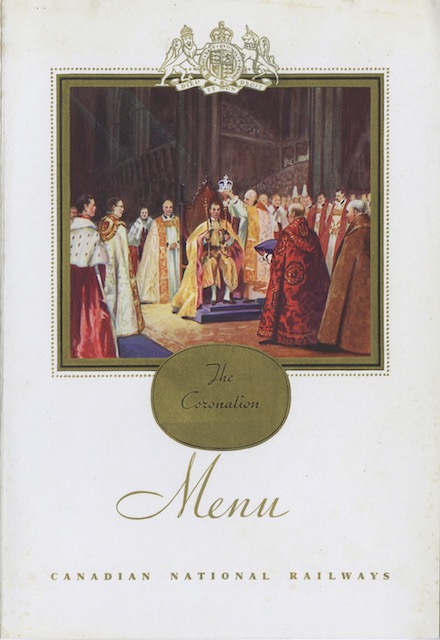These two pairs of See America First postcards have the same photos on the front but different rhymes on the back. The first pair shows Going to the Sun Camp. This opened as a dining hall and cabins for 38 guests in 1912, then expanded into a full chalet with room for 200 guests in 1915, suggesting that the cards were issued in 1913 or 1914.
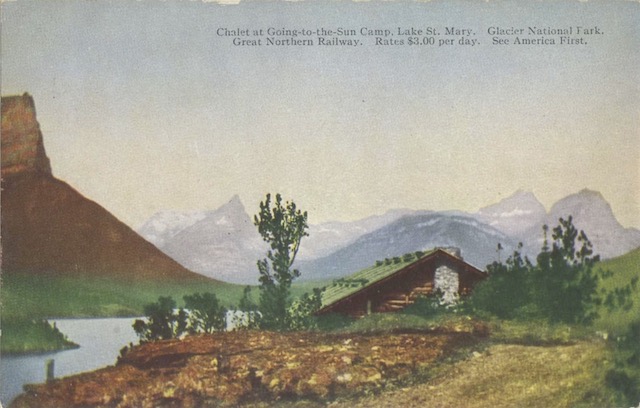 Click image to download a 215-KB PDF of this postcard.
Click image to download a 215-KB PDF of this postcard.
The back of the first card reads, “The grandeur of the scenes seen there/You’ll carry with you–everywhere.”The back of the second card reads, “Grandeur dwells on every side/See it on a horseback ride.” At least both mention grandeur. Though the photo was probably taken by Fred Kiser, there is no copyright notice. Continue reading
